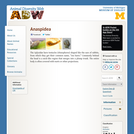
Anaspidea: Information
- Subject:
- Life Science
- Zoology
- Material Type:
- Reading
- Provider:
- University of Michigan Museum of Zoology
- Provider Set:
- Animal Diversity Web
- Date Added:
- 03/07/2005

Anaspidea: Information

Anas platyrhynchos: Information
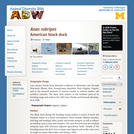
Anas rubripes: Information
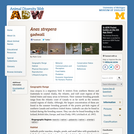
Anas strepera: Information
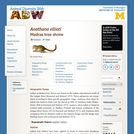
Anathana ellioti: Information
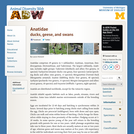
Anatidae: Information
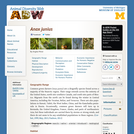
Anax junius: Information
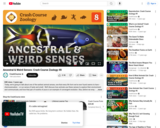
Today, we're going to talk about one of the earliest animal senses, one that every life form we've ever found seems to have -- chemosensation -- or our sense of taste and smell. We'll discuss how animals use these senses to explore their environment and communicate, and how that pair of nostrils of yours is an example of convergent evolution. Also, before we wrap up our discussion of animal senses we're going to talk about a couple so specialized that seem straight from the pages of comic books -- the ability to sense electric and magnetic fields!
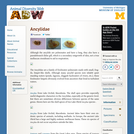
Ancylidae: Information
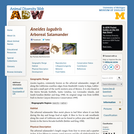
Aneides lugubris: Information
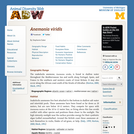
Anemonia viridis: Information
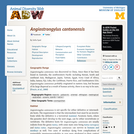
Angiostrongylus cantonensis: Information
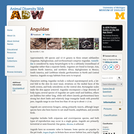
Anguidae: Information
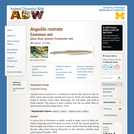
Anguilla rostrata: Information
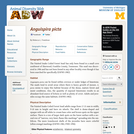
Anguispira picta: Information
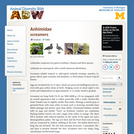
Anhimidae: Information
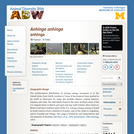
Anhinga anhinga: Information
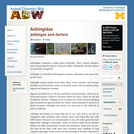
Anhingidae: Information

HyperSlides are digital lessons/units that help students learn the material in a way that is engaging and inquiry-based. Students will work together to complete a HyperSlides unit centering around animal adaptations for standards in grades 3-5. Students will work creatively and collaboratively with a variety of Course of Study standards that engage students through using Google Slides and a Hyperlinks to assist in the understanding of animal adaptations. This project will take several class periods to complete. After an introduction to the Hyperslides, students are encouraged to work at their own pace, but Hyperslides can be assigned on a daily basis. This Lesson Plan was created in partnership with the Birmingham Zoo.
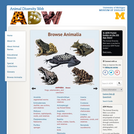
This site is a searchable encyclopedia of thousands of photos, descriptions, sound recordings, and other information about individual animal species. Find out about amphibians, arthropods, birds, fishes, insects, mammals, mollusks, reptiles, and sharks. Explore special features on mammals, skulls, and frog calls. Students are invited to contribute.